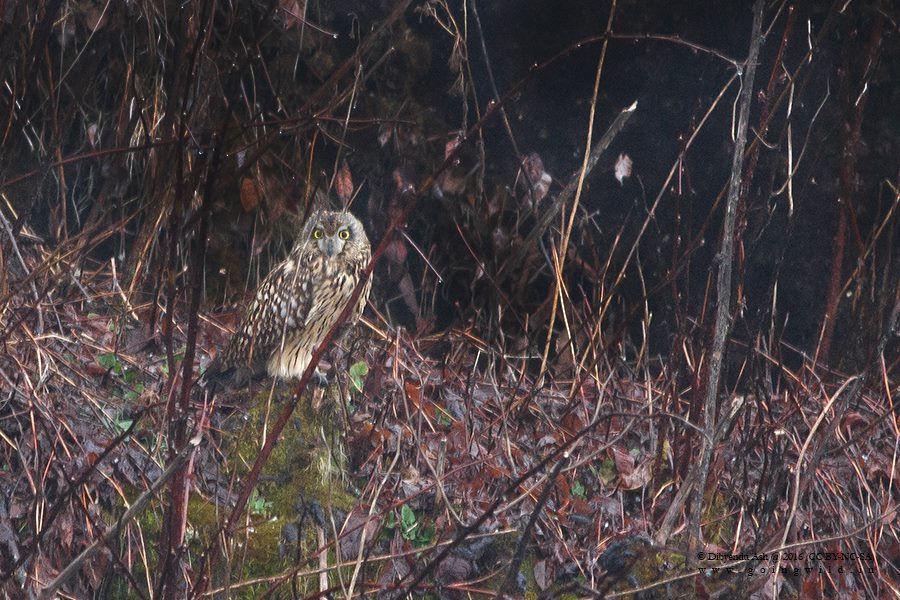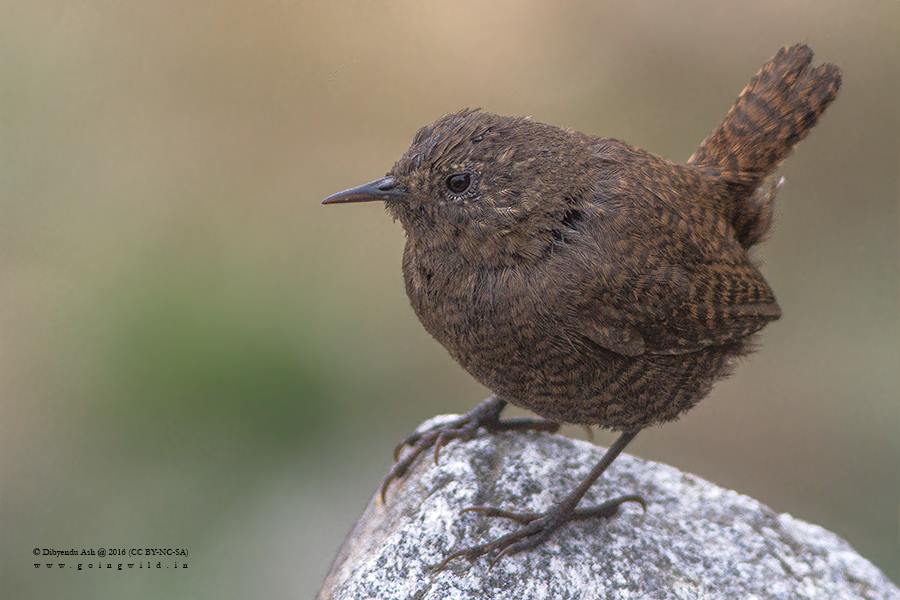Hello guys, hope you enjoy reading the posts related to birding from this blog. In the month of April 2016, I was accompanied by four birders cum bird photographers in Neora Valley National Park. Those guys continued birding in Pangolakha as well later. The timing for birding was perfect for us, as it was pre-breeding season for birds of Himalayas.
In just four days of birding we listed some rare birds which are not that much common in this part of Himalayas like - Red-throated Thrush and some skulkers like - Golden Babbler, Himalayan Cutia, Brown-throated Treecreeper, White-browed Shrike Babbler (now known as Himalayan Shrike Babbler) etc.
All the participants got ample opportunities to photograph those colorful beauties beside photographing commoners as well like, Red-billed Leiothrix, Blue-winged Minla, small babbler species, warblers, flycatchers etc.
Now enjoy the photographs taken during the birding tour and let us know your thoughts on covering this birding heaven with us. You can keep in touch with us by mailing at support@goingwild.in; through which you will get updates on our upcoming birding and bird watching tours to north-east India.
Itinerary:
Here is the itinerary that we followed during the bird photography tour to Neora Valley.
13th April 2016:
We had to pick up three guys from Bagdogra Airport and one from New Jalpaiguri Rly station. After picking them up, around 10 AM we started leaving Siliguri. Since at places we were stuck by traffic it took two hours and thirty minutes to reach to Kalimpong. Around 1:30 Hrs after finishing our lunch; we drove out of Kalimpong and headed to Pedong to our home stay; where we stayed for all the days during this birding tour. In the afternoon we did some birding, while we got Himalayan Cutia, Eurasian Cuckoo and some two species of Laughingthrushes; Suraj joined us a little later. In the evening we had a discussion on next day birding planner.
14th April 2016:
Today we started very early and covered Sillerygaon birding trail in the morning. We had packed breakfast with us. In the morning birding session in Sillerygaon we had seen Himalayan Cutia twice; otherwise we saw Little Bunting, Rufous-breasted Accentor, Tickell's Thrush etc. Later as the sun came up bird activities slowed down and we moved back to our home stay. We had some egg curries with dal and rice / roti mix in lunch. Later after some rest we started our afternoon birding around 2:30 PM. This time we drove to Pedong and Lava-Alagarh birding trail. In the afternoon, the main highlight species was Black-throated Parrotbill; otherwise we just saw commoners. We drove back to our home stay around 6:30PM in the evening.
15th April 2016:
We started very early today, since we had to cover upper and lower ridges of Neora Valley. So we started around 5:30 on that day. In the first half of morning birding session, we saw Golden Babblers, Himalayan Shrike Babblers, Black-throated Parrotbill, Brown-throated Treecreepers etc. Some commons include Black Eagle, Mountain Hawk Eagle, Bar-throated Siva, Black-faced Warbler etc. Eventually, we saw two squirrel species which are exclusively found in North-east part of Himalayas; these were - Himalayan Striped Squirrel and Hoary-bellied Squirrel. After around 10 plus hours of birding we were really tired and moved back to Lava town to have some tea and snacks. Around 6 we left Lava and drove to Sillerygaon.
16th April 2016:
Today we again repeated upper and lower Neora Valley as previous day. We mostly did it by hiking along the pipeline roads and Kolakham village. For two hours we spent in Changey falls as well. Later in the afternoon birding session we went to Rishop and did birding alongside, Lava-Rishop trekking trail. The birds which were yet to be photographed of good quality; we got that. Though we tried our luck for Red-headed Trogon; in the next birding tour however we got Trogon.
17th April 2016:
We started very early today since it was the last day for birding in Neora Valley. In the early morning around 5:30 AM we hiked towards Damsang Fort area and got Rufous-bellied Eagle and Himalayan Swiftlet. Later while coming down we saw Tickell's Thrush and Nepal Fulvetta. Nepal Fulvetta we saw in a huge flock, but they were hard to photograph due to their skulker behaviour. After having our breakfast, we checked out from our homestay and continued our journey to Pangolakha WLS in east Sikkim for birding.
Bird-list can be seen at "click here" [Bird Photography Tour in Darjeeling district, North Bengal, at Neora Valley National Park]
Participants:
Partha Sarothi Dutta
Rana Banerjee
Mahaveer Nathawat
Suraj Ramamurthy
Other Helpful Information:
Where to Stay: Stay options are ample. Arrangements are made in prior notice only. On twin and triple sharing basis home-stays are arranged for enthusiasts by GoingWild. Otherwise you can do it all by yourself.
Best time to visit: Try to avoid this place in the months of monsoon, otherwise it is a premium location for rest eight months. Early October to late May is the best time for birding and bird photography. Even last weeks of September are considered good for pheasants.
Point of Contact: Send a mail to support@goingwild.in
One can also reach to +91-9681417974 (Dibyendu Ash) or +91-8017804277 (Soumyajit Nandy) or +91-9163631493 (Tamanud Mitra) for guided birding all over the Old-Silk Route. Arrangement for clean and subtle home-stays, dedicated car for entire birding trip along with a naturalist-cum-birder are done by GoingWild.
In just four days of birding we listed some rare birds which are not that much common in this part of Himalayas like - Red-throated Thrush and some skulkers like - Golden Babbler, Himalayan Cutia, Brown-throated Treecreeper, White-browed Shrike Babbler (now known as Himalayan Shrike Babbler) etc.
All the participants got ample opportunities to photograph those colorful beauties beside photographing commoners as well like, Red-billed Leiothrix, Blue-winged Minla, small babbler species, warblers, flycatchers etc.
Now enjoy the photographs taken during the birding tour and let us know your thoughts on covering this birding heaven with us. You can keep in touch with us by mailing at support@goingwild.in; through which you will get updates on our upcoming birding and bird watching tours to north-east India.
Itinerary:
Here is the itinerary that we followed during the bird photography tour to Neora Valley.
13th April 2016:
We had to pick up three guys from Bagdogra Airport and one from New Jalpaiguri Rly station. After picking them up, around 10 AM we started leaving Siliguri. Since at places we were stuck by traffic it took two hours and thirty minutes to reach to Kalimpong. Around 1:30 Hrs after finishing our lunch; we drove out of Kalimpong and headed to Pedong to our home stay; where we stayed for all the days during this birding tour. In the afternoon we did some birding, while we got Himalayan Cutia, Eurasian Cuckoo and some two species of Laughingthrushes; Suraj joined us a little later. In the evening we had a discussion on next day birding planner.
14th April 2016:
Today we started very early and covered Sillerygaon birding trail in the morning. We had packed breakfast with us. In the morning birding session in Sillerygaon we had seen Himalayan Cutia twice; otherwise we saw Little Bunting, Rufous-breasted Accentor, Tickell's Thrush etc. Later as the sun came up bird activities slowed down and we moved back to our home stay. We had some egg curries with dal and rice / roti mix in lunch. Later after some rest we started our afternoon birding around 2:30 PM. This time we drove to Pedong and Lava-Alagarh birding trail. In the afternoon, the main highlight species was Black-throated Parrotbill; otherwise we just saw commoners. We drove back to our home stay around 6:30PM in the evening.
15th April 2016:
We started very early today, since we had to cover upper and lower ridges of Neora Valley. So we started around 5:30 on that day. In the first half of morning birding session, we saw Golden Babblers, Himalayan Shrike Babblers, Black-throated Parrotbill, Brown-throated Treecreepers etc. Some commons include Black Eagle, Mountain Hawk Eagle, Bar-throated Siva, Black-faced Warbler etc. Eventually, we saw two squirrel species which are exclusively found in North-east part of Himalayas; these were - Himalayan Striped Squirrel and Hoary-bellied Squirrel. After around 10 plus hours of birding we were really tired and moved back to Lava town to have some tea and snacks. Around 6 we left Lava and drove to Sillerygaon.
16th April 2016:
Today we again repeated upper and lower Neora Valley as previous day. We mostly did it by hiking along the pipeline roads and Kolakham village. For two hours we spent in Changey falls as well. Later in the afternoon birding session we went to Rishop and did birding alongside, Lava-Rishop trekking trail. The birds which were yet to be photographed of good quality; we got that. Though we tried our luck for Red-headed Trogon; in the next birding tour however we got Trogon.
17th April 2016:
We started very early today since it was the last day for birding in Neora Valley. In the early morning around 5:30 AM we hiked towards Damsang Fort area and got Rufous-bellied Eagle and Himalayan Swiftlet. Later while coming down we saw Tickell's Thrush and Nepal Fulvetta. Nepal Fulvetta we saw in a huge flock, but they were hard to photograph due to their skulker behaviour. After having our breakfast, we checked out from our homestay and continued our journey to Pangolakha WLS in east Sikkim for birding.
 |
| It may look like an alien to you!Red-throated Thrush was there at Neora Valley; I forgot to post that previously. Do see better quality images of Rana Banerjee, Parthasarothi Dutta and Suraj Ramamurthy. Red-throated Thrush | (Turdus ruficollis)16.04.2016 | 20th Mile, Adjacent to Neora Valley NP, West Bengal |
 |
| Cute Cutia! Himalayan Cutia (Cutia nipalensis) |14.04.2016 | Neora Valley National Park, West Bengal |
 |
| An early morning Tickell's Thrush. Tickell's Thrush (Turdus unicolor) |14.04.2016 | Neora Valley NP, West Bengal |
 |
| During all our birding trips to Neora Valley in this season, we saw Black-throated Parrotbills in flock. Each encounter consisted the flock size of 15-20. Mostly active through out the day until sundown. Whereas in Pangolakha we saw both Brown Parrotbills and Fulvous Parrotbills. However, we didn't had any luck to see Great Parrotbill this time. Black-throated Parrotbill (Suthora nipalensis) |15.04.2016 | Neora Valley National Park, Darjeeling, West Bengal |
 |
| Some birds are so beautiful that you can't refuse to photograph them! Black-faced Warbler (Abroscopus schisticeps) |15.04.2016 | Neora Valley National Park, West Bengal |
Participants:
Partha Sarothi Dutta
Rana Banerjee
Mahaveer Nathawat
Suraj Ramamurthy
Other Helpful Information:
Where to Stay: Stay options are ample. Arrangements are made in prior notice only. On twin and triple sharing basis home-stays are arranged for enthusiasts by GoingWild. Otherwise you can do it all by yourself.
Best time to visit: Try to avoid this place in the months of monsoon, otherwise it is a premium location for rest eight months. Early October to late May is the best time for birding and bird photography. Even last weeks of September are considered good for pheasants.
Point of Contact: Send a mail to support@goingwild.in
One can also reach to +91-9681417974 (Dibyendu Ash) or +91-8017804277 (Soumyajit Nandy) or +91-9163631493 (Tamanud Mitra) for guided birding all over the Old-Silk Route. Arrangement for clean and subtle home-stays, dedicated car for entire birding trip along with a naturalist-cum-birder are done by GoingWild.


















